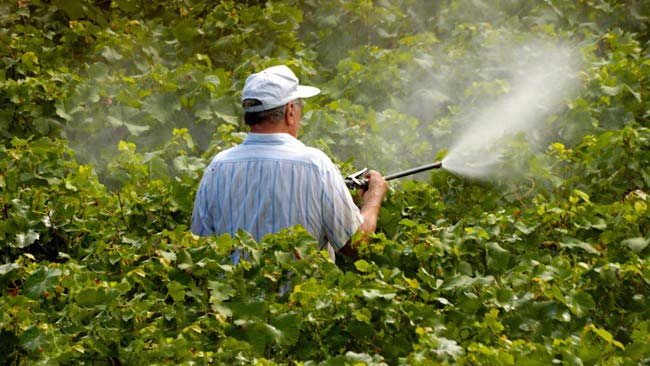2 Simple Tricks to Remove Pesticides From Fruits and Vegetables

- By Alex Jordon - September 22, 2014
Today, more than 65% of the produce samples analyzed by the U.S. Department of Agriculture actually test positive for pesticide residue. This means that unless you solely buy certified organic fruits and vegetables, you are likely consuming a number of chemicals daily.
To inform the public about these dangers, and educate them on how to stay healthy, the Environmental Working Group (EWG) publishes an annual report of the dirtiest, and cleanest, fruits and vegetables you can buy. Their worst list is called the ‘Dirty Dozen’, and these are the 12 items you should make sure to buy organic.
The twelve offenders on the EWG’s current ‘Dirty Dozen’ list are:
1.Apples
2.Strawberries
3.Grapes
4.Celery
5.Peaches
6.Spinach
7.Sweet bell peppers
8.Nectarines (imported)
9.Cucumbers
10.Cherry tomatoes
11.Snap peas (imported)
12.Potatoes
And the fruits and veggies with the least pesticides are:
1.Avocados
2.Sweet corn
3.Pineapples
4.Cabbage
5.Sweet peas (frozen)
6.Onions
7.Asparagus
8.Mangos
9.Papayas
10.Kiwi
11.Eggplant
12.Grapefruit
13.Cantaloupe
14.Cauliflower
15.Sweet potatoes
No matter what, though, whichever fruits and vegetables you purchase, you should make sure to clean them thoroughly before eating.
Ways to make fruits and vegetables safe for eating
There are some easy ways to clean up your produce and make it safer to eat. Both of these methods are cheap, too. You do not have to buy any expensive ‘washes’ as you may have seen in the store. No, you can clean up your vegetables and fruit with simple items that are probably already in your kitchen.
White Vinegar
The first option is to use white vinegar. You can purchase distilled white vinegar pretty cheaply in your grocery or big box store. Simply create a mixture of water and white vinegar, and then soak your produce in it. The mixture will be 90% water and 10% white vinegar. Soak your fruits and vegetables for about 15 minutes and then rinse.
You will notice that the bowl of water has plenty of dirt and residue left in it. This is fine for almost all fruits, but since berries have more porous skin, they may take on a vinegary taste, so do not use this method for them. Instead, you can use lemon juice in place of the vinegar.
3 Types of Vinegars and 6 Ways to Receive Their Healing Powers
Salt Water
The second option is just as simple: Salt water. Combine 98% water and 2% salt. Soak again for about 15 minutes. This rinse will remove most of the contact pesticide residue from the surface of your fruits and vegetables.
Always be thorough when washing your produce, even if it is organic. Washing, when you are diligent about it, will typically remove about 80% of the pesticides on your food.
Wash carefully, in cold water, to protect your family’s health.
Resources:


